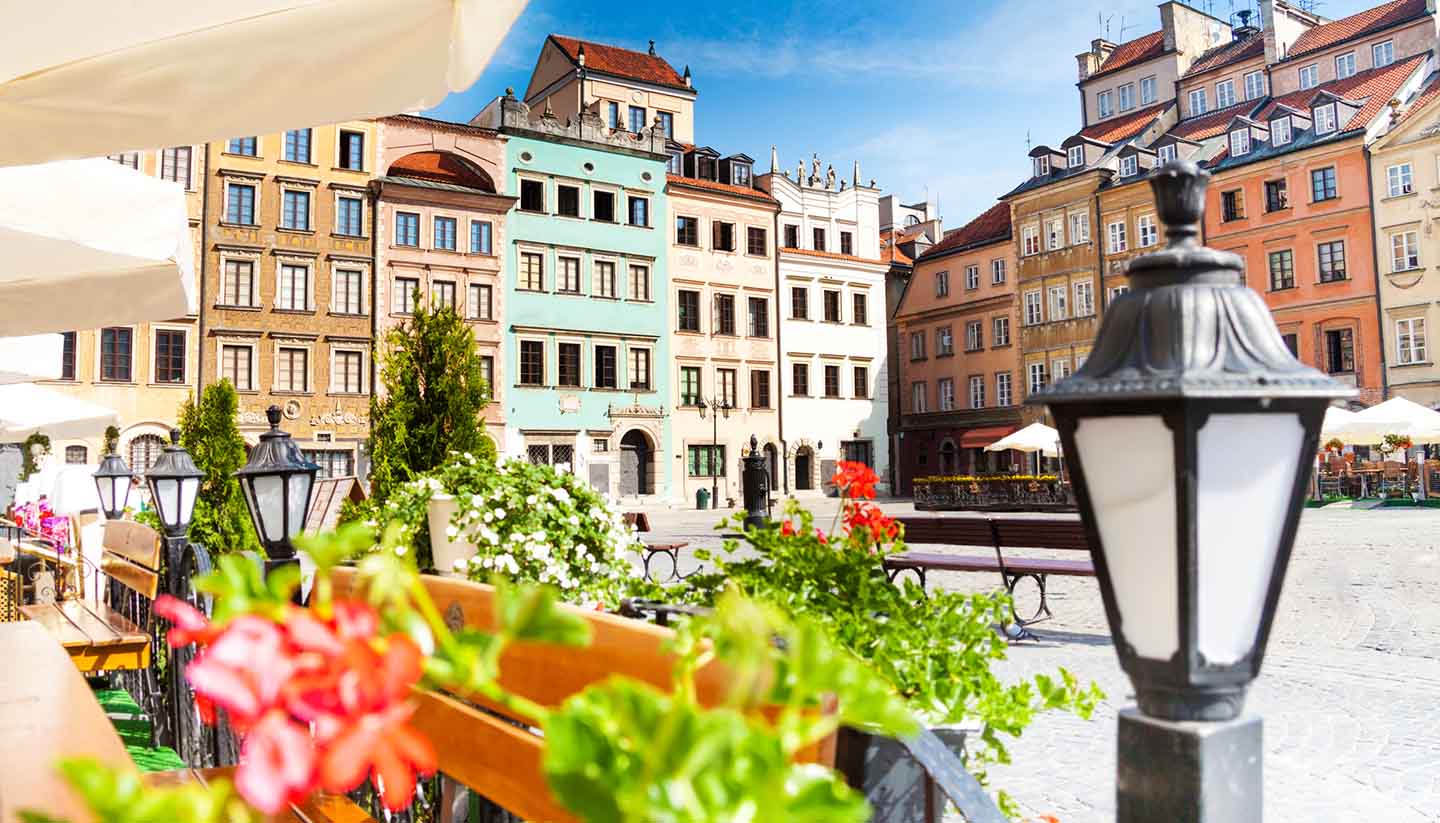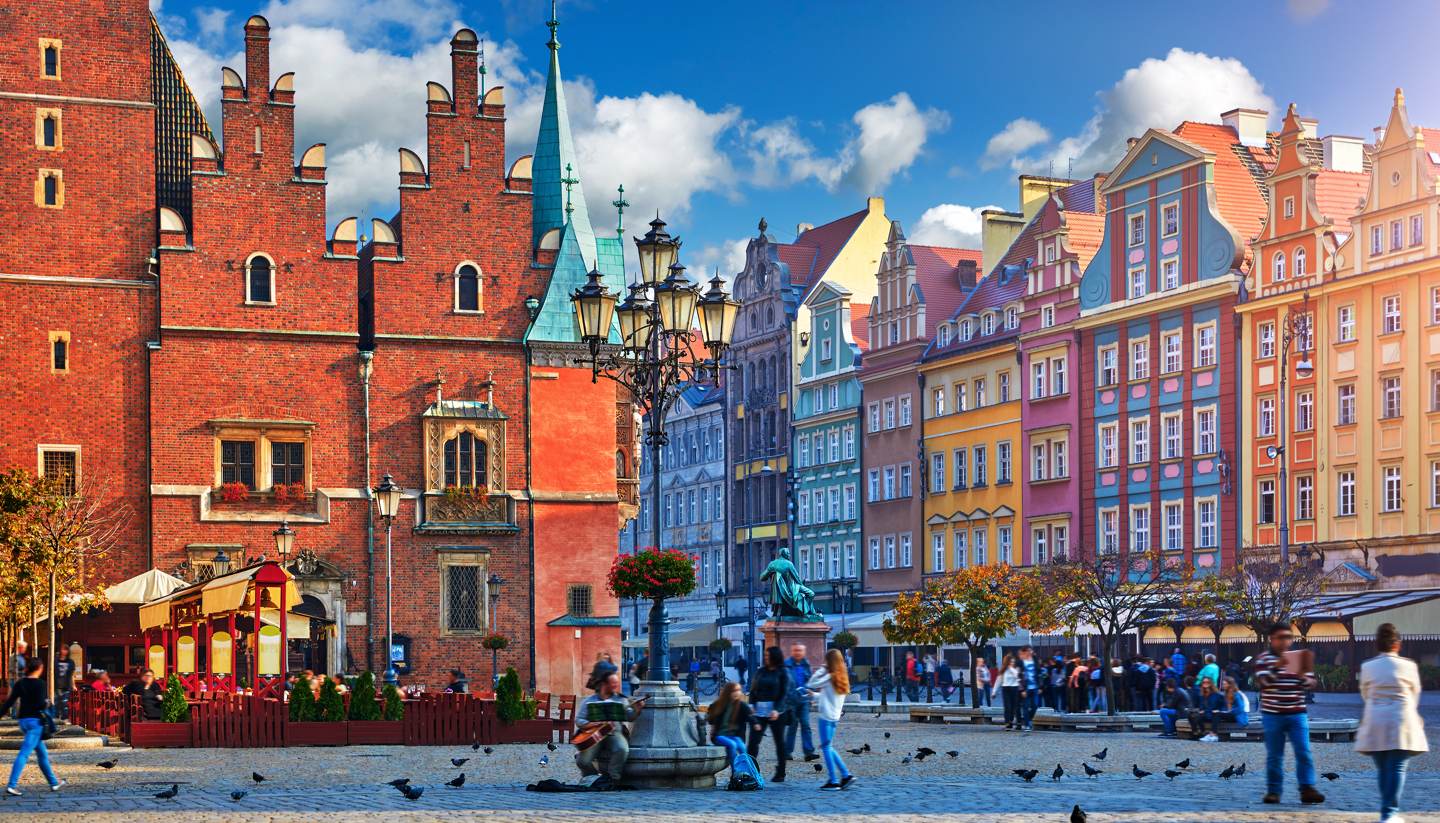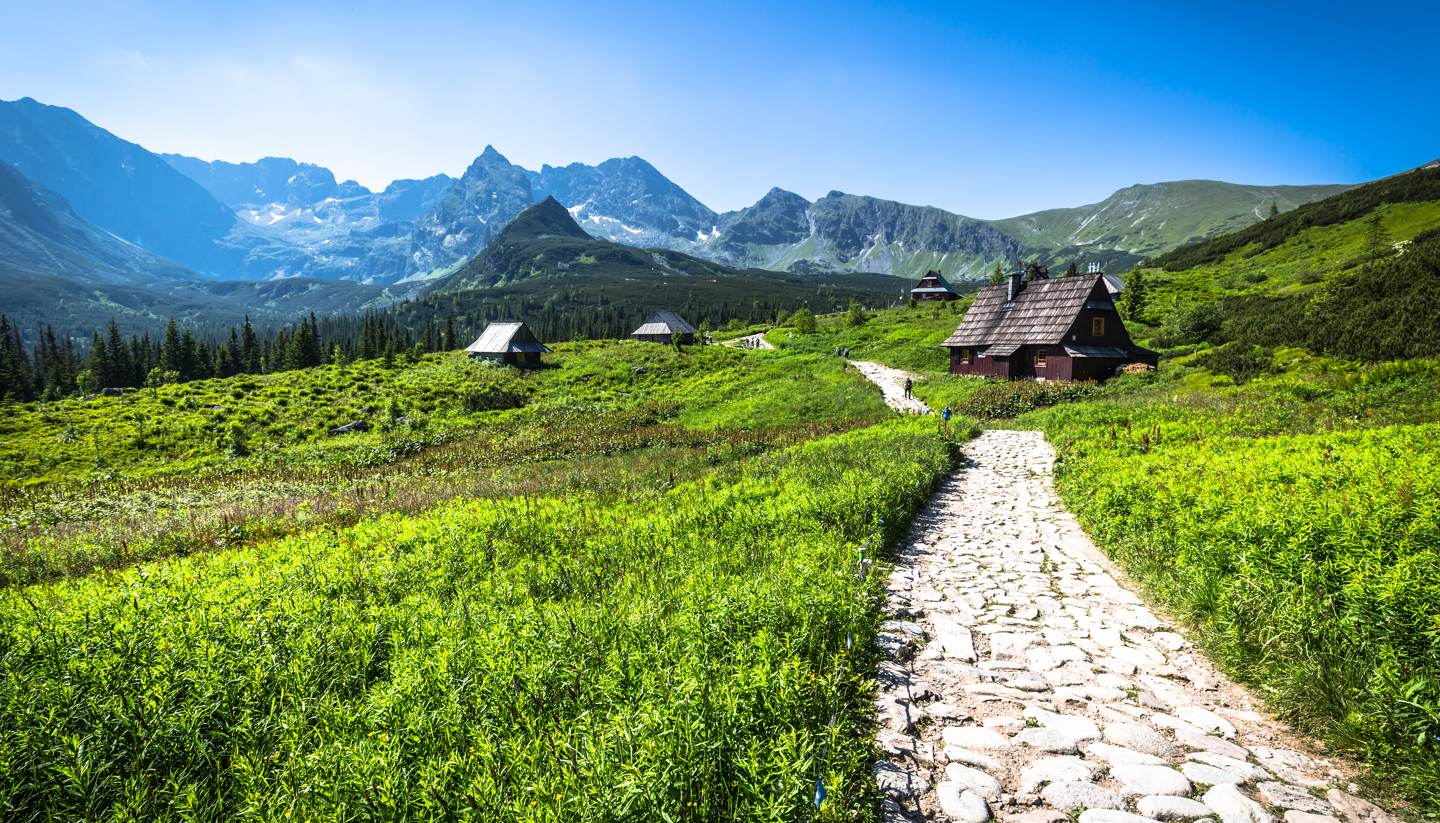Poland Food and Drink
You've not really experienced Poland until you've had a plate of pierogi. Crescent-shaped and made from dough, they are a bit like ravioli in that they are stuffed with a whole range of fillings, including cottage cheese, potato and onion, minced meat, sauerkraut or even fruit, then fried or boiled.
There's much more to Polish food than its pierogi, however. A wide range of ingredients populate the kitchen here, including dill, marjoram, caraway seeds, wild mushrooms and sour cream, which is frequently added to soups, sauces and braised meats.
Soups play an important part at mealtimes and are usually rich and very thick. A staple soup is żurek made with stock, bacon, onion, mushrooms and sour cream, and is given a distinctive, almost sour taste with the addition of kwas, a kind of fermented rye flour. It's often accompanied by hard-boiled egg or kiełbasa (Polish sausage).
Main courses include fish dishes using trout, carp and herring, as well as stuffed cabbage leaves, pork chops and other heavy-going, meaty fare. Polish cuisine is also noticeable for its pastries; you'll find a wide selection in the cukiernia, a patisserie or cake shop. Poles traditionally wish each other smacznego, the Polish equivalent of ‘bon appetit’, at the start of a meal. They end it in a delightful way too – by saying thank you to one another!
Specialities
Bigos: Sauerkraut, fresh cabbage, onions and any variety of leftover meat.
Kasza gryczana: Buckwheat groats.
Kiełbasa: Polish sausage.
Kluski: Dumplings about the size of golf balls sometimes served on their own with cottage cheese or poppy seeds.
Pierogi: Dumplings stuffed with meat, mushrooms and cabbage or cheese.
Zurek: A soup made with stock, bacon, onion, mushrooms and sour cream, and is given a distinctive, almost sour taste with the addition of kwas.
Krupnik: A thick barley potage containing a variety of vegetables and small chunks of meat. Better known than those two, though, is barszcz (or borscht – beetroot soup), which runs thin and clear and is often served in cups with small hot pasties stuffed with meat or cabbage.
Gołąbki: Cabbage leaves stuffed with beef, onion and rice and baked in tomato sauce.
Golonka: Boiled pig's knuckle served with horseradish and sauerkraut.
Szarlotka: A dessert that's somewhere between an apple pie and a pastry.
Sernik: Cheesecake made from special Polish cheese filling.
Pączki: Jam doughnuts.
Makowiec: Poppy seed cake.
Żywiec: A fairly strong lager.
Wódka: The country's national tipple is Polish vodka, which comes in many different varieties.
Tipping
A tip of 10 to 15% is customary in restaurants and cafés. Usually you just add it in and tell the waiter how much you are paying in total (including the tip). Do not just hand the waiter a note and say 'thank you' at the same time, which here means 'keep the change'.
Drinking age
18.




